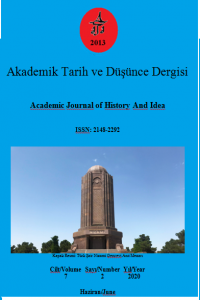Geçmişten Günümüze Münâfıkların Değişmeyen Faaliyetleri (Asr-ı Saadet ve Nifâk Eylemleri)
Tarihe bakıldığı zaman hakkın hâkim olduğu yerde batıl da varlığını
sürdürmüştür. Bu anlamda nifak hareketinin insanlık tarihi kadar eski olduğunu
söylemek mümkündür. İslâm tarihinde ise
bu yapının ilk emareleri, müslümanların organize bir yapıya sahip olmaya doğru
yol aldığı ve teşkilatlanma sürecine girdiği Medine döneminde
görülmektedir. Hicretin II. yılında
yapılan Bedir Gazvesinin, müslümanların mağlubiyeti ile sonuçlanacağı
beklentisinde olan bir grup yahudi ve müşrik, zahiren müslüman gibi görünmek
zorunda kalmışlardır. İslâmî literatürde münafık diye adlandırılan bu muhalif gruplar,
kısa zamanda kendi oluşumlarını başlatarak devleti içten çökertme eylemlerine girişmişlerdir.
Medine’deki eğitimi ele geçirmekle işe başlayan münafıklar, Kuba Mescidi
civarındaki ev oturmaları ile ilk faaliyetlerini başlatmışlardı. Bu anlamda Münafık
başı Übey b. Selûl’ün yeğeni Ebû ‘Âmir adındaki kişinin evini seçmişlerdir. İlerleyen
zaman içerisinde bu oturmalarını meşru bir zemin üzerine kurmak isteyen
münafıklar Ebû ‘Amir’in talimatıyla mescit adını verdikleri bir bina inşa
ederek faaliyetlerini burada sürdürmüşlerdir. Böylece barış zamanında toplumsal
huzuru bozma adına bölücü faaliyetlerde bulunma; Hz. Muhammed’e gelen vahyi küçümseyip,
taraftarlarını Kur’an’dan uzak tutmaya çalışma; peygamberin şahsını ve ailesini
hedef alan şantaj hareketlerinde bulunma; savaş ortamlarında ordunun cesaretini
kırma, dış bağlantılarla düşmana avantaj sağlayan yollara başvurma, Peygambere
karşı suikast girişimleri ve devleti içten çökertmeye çalışarak paralel bir
devlet yapılanması şeklinde terör faaliyetleri içinde olmuşlardır. Gizli bir
örgüt olan münafıkların bu davranışları karşısında, bir taraftan Kur’ân
âyetleri bu kimselerin örgütsel faaliyetlerini deşifre ederek engellerken,
diğer taraftan Hz. Peygamber de üstün siyasi dehasıyla, kurdukları hile ve
entrikaları bertaraf etmeye çalışmıştır. Daha önce ortaya koyduğumuz bir
çalışmada “Geçmişten Günümüze Münafıkların Değişmeyen Karakteri” Kur’an’ın
nitelemesi ile ortaya konulmuştu. Bunların karakterinin geçmişten günümüze
değişmediğine, kişi ve şahısların ölümüyle, kişilik ve şahsiyetlerin yok olmadığına
dikkat çekilmişti. Bu çalışmada ise Kur’an âyetlerinin ortaya koyduğu münafık
tiplemesinin asr-ı saadette ortaya koydukları kaos, fitne, şantaj, darbe teşebbüsü
ve paralel devlet yapılanmaları gibi eylemlerinden bahsedilecektir.
The activities of the hypocrites are unchanged from the past to the present (Their activities in the era of the Prophet)
When you look at history, the more you
dominate the falsehood, the hypocrisy appears with it. In this sense, it can be
said that the movement of Naqaf is as old as the history of mankind. The first signs in the Islamic history of this structure
appear during the period of the city where Muslims move towards a structured
structure and enter into the process of organization. In
the second century of immigration, a group of Jews and polytheists who were
expecting to be the invasion of Badr defeat Muslims to appear to Islam
apparent. These opposition groups called the hypocrites of their
own organizations in a short time and began to undermine the state internally. The hypocrites began their work by taking
their first training and activities in the city with the home settlements
around the Cuban Mosque. In this
sense, they chose the house of the nephew of the head of the bin Abu bin
Saloul, who is called Abu Amer. In the near future, the hypocrites will
continue to work in a legitimate area by building a mosque called Al-Dirar
mosque.
Thus, in
order to spoil social peace in times of peace and to create chaos, to diminish
the revelation of Muhammad and to try to keep his followers away from the
Qur'an; to engage in blackmailing attacks against the people and the Prophet's
family; they were involved in terrorist activities in the form of a parallel
state structure The courage of the army in a war environment, the use of means
to benefit the enemy through external links, the organization of assassinations
against the Prophet and the destruction of the state from within. In the face
of the acts of hypocrites, which was a secret organization, the Quranic verses
prevented these people from deciphering their organizational activities. On the
other hand, the Prophet, with his superior political genius, tried to eliminate
the tricks and conspiracies they established. In a study before we presented in
the light of the Koran that the nature of the hypocrites is unchanged from the
past to the present. It was
noted in this study that their personality has not changed from the past to the
present and does not mean the death of people extinction personalities. In this study, the chaos, their attempted coup and the
formation of the parallel state will be discussed by the Qur'anic verses.
___
- PİŞGİN, Y, Kur’ân’da Karakter İnşası, Ankara: İlahiyat Yayınları, 2017.
RÂZÎ, F.,. Mefâtîhu’l-Gaby, Beyrut: Dâru’l-Kübübi’l-İlmiyye, 2000.
SEZİKLİ, A., Hz. Peygamber Devrinde Nifâk Hareketleri, Ankara: Türkiye Diyanet Vakfı Yayınları, 1994.
TABERÎ, M. C., Câmiu’l-Beyân fî Te’vîli’-Kur’ân, Beyrut: Müessesetü’r-Risâle, 2000.
TİRMİZÎ, M.İ., el-Câmiu’l-Kebîr, Thk. Beşşâr Avvâd Ma’rûf, Beyrut: Dâru’l-Garbi’l-İslâmî, 1998.
VÂKİDÎ, M. A.,). Kitâbû’l-Meğâzî, Haz. Marsden Jones, Beyrut: Âlemu’l-Kütüb, 1984.
